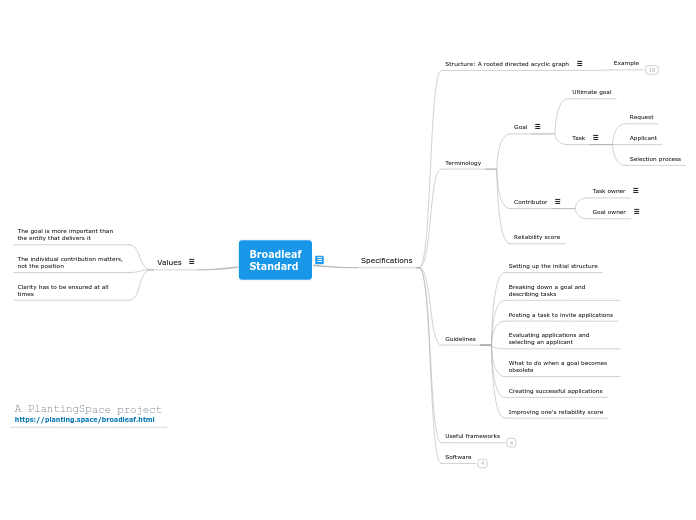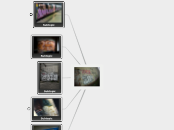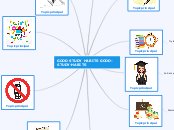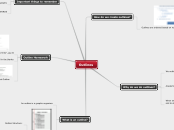A PlantingSpace project
https://planting.space/broadleaf.html
Broadleaf
Standard
Broadleaf is a way for people to organise work in order to achieve a common goal. It can be seen as a standard that describes fundamental values and provides concrete specifications and tools for organising a project effectively.
https://planting.space/broadleaf.html
Broadleaf is a set of values and tools.
It enables the coordination of individual contributors or whole groups of people to achieve a goal, such as delivering a project, a set of many projects, or a long-term mission.
It works for whole companies, project teams within companies, open source projects, or initiatives of any kind.
Values
While any project that makes use of Broadleaf has its own values and goal, there are three fundamental values that define the Broadleaf mindset which guides the organisational setup.
Making the values explicit is crucial because they guide the mindset behind how work gets done, and help attract people that share the same values.
Clarity has to be ensured at all times
Ensure clarity for individuals.
- Contributors stay motivated by having an understanding of their contribution.
- Clarity empowers the individuals to evolve project structure to best fulfil the goals.
The individual contribution matters, not the position
Prioritize the individual contribution over the position.
- Contributors stay motivated given their ambition to contribute to the goals.
- Contributors can rely on each other due to clear accountability.
- Expectations are clear by not being tied to a position, but to concrete tasks.
- Individuals can stay mobile within and across projects.
The goal is more important than the entity that delivers it
Prioritize the ultimate goal over the entities that deliver it: do not let the corporation eat the project.
- Contributors stay motivated by the goal, not having to question the entity.
- Project can live beyond its entity and leverage any entities it needs.
- When goals are aligned there should be no need to engage in antagonistic competition.
Specifications
The tools that enable the realization of the values consist of two types:
- On one hand Broadleaf provides concrete frameworks for structuring what has to get done, organising resources, scaling, getting funding, etc.
- On the other hand Broadleaf leverages technology, i.e., application software, to make applying the frameworks as smooth and simple as possible.
Software
Contributor community management
Task delivery, documentation, and rating
Task creation and assignment
Graph visualization
Useful frameworks
Issue tree
Situation-Complication-Solution
Lead-Plan-Communicate-Deliver
'SMART' goals
Guidelines
Improving one's reliability score
Creating successful applications
What to do when a goal becomes obsolete
Evaluating applications and selecting an applicant
Posting a task to invite applications
Breaking down a goal and describing tasks
Setting up the initial structure
Terminology
Reliability score
Contributor
A contributor is a person or an organisation that contributes to the achievement of the ultimate goal of the project by committing themselves to delivering a concrete task. Contributors can take on two different roles:
Goal owner
Goal owner:
* When a task has to be broken down to subtasks that require engaging additional contributors for completion, the task becomes a goal, and the task owner becomes a goal owner.
* In addition to typically taking on one or more of the newly created tasks themselves, the goal owner is responsible for coordinating all the workstreams that compose the goal.
* A goal owner who provides high-quality leadership and support to their contributors has higher chances to successfully achieve their goal, and to secure the loyalty of good contributors for future endeavours.
Task owner
Task owner: this person or organisation is responsible for completing a concrete task.
Whatever needs to get done within the project represents a goal. There are two special types of goals:
- Ultimate goal: The goal on the highest level (the starting point of the graph) is called the 'ultimate goal', because its achievement is the ultimate purpose of the project.
- Task: The goals on the lowest level of the graph are called 'tasks'. This is to distinguish the fact, that this type of goal does not depend on any other goal at the time of its creation. A task can become a goal again if the owner of the task realizes that the task does in fact depend on other tasks getting done.
A task is a goal without further dependencies at the time of its creation. It results from the breakdown of a goal into different workstreams that need to be performed in order to achieve the goal.
When a task owner takes on a task, they might realize that the task needs to be broken down further into workstreams for which they need to engage other Contributors. When this leads to the creation of (sub-)tasks, the task itself becomes a goal, and the task owner becomes a goal owner.
The Broadleaf specifications provide exact guidelines for how to create a task and make it available to contributors to apply for it. This is important in order to ensure as much clarity as possible to anyone who is interested in taking on the task. Most importantly, the guideline defines
The description consists of:
- A concise task name and the goal to which the task is linked [mandatory]
- Useful information, such as the background of the task, the problem that should be solved, a list of helpful resources, descriptions that help the Applicant to make an adequate proposal [optional]
- Specification of the desired end-product: Request [mandatory]
* The process that will be followed to select an applicant: Selection Process [mandatory]
Selection process
Applicant
Request
Ultimate goal
Structure: A rooted directed acyclic graph
The Broadleaf project structure can be thought of as a rooted directed acyclic graph.
- Each node (vertex) in the graph represents a goal. The root node of the graph is the ultimate goal that the project wants to achieve. This ultimate goal is broken down to (sub-)goals that need to get done in order to achieve the ultimate goal. There can be many levels of goals.
- The links (edges) between the nodes represent dependencies, shown as arrows. The node at the start of an arrow depends on the achievement of the goal at the end of the arrow (its 'sub-goal').
- Goals from different branches can depend on the achievement of the same (sub-)goal (therefore, the Broadleaf project structure is not a hierarchical tree, but a graph).
This specific structuring reflects Broadleaf's values. All goals and tasks are connected, and they are all on a direct path to the ultimate goal. No one working on a task should need to ask themselves what purpose they fulfil, or what they are helping to achieve. No one can make up tasks out of thin air, without justifying them with a clear link to an existing goal.
Example
Ultimate Goal
Goal
Task









